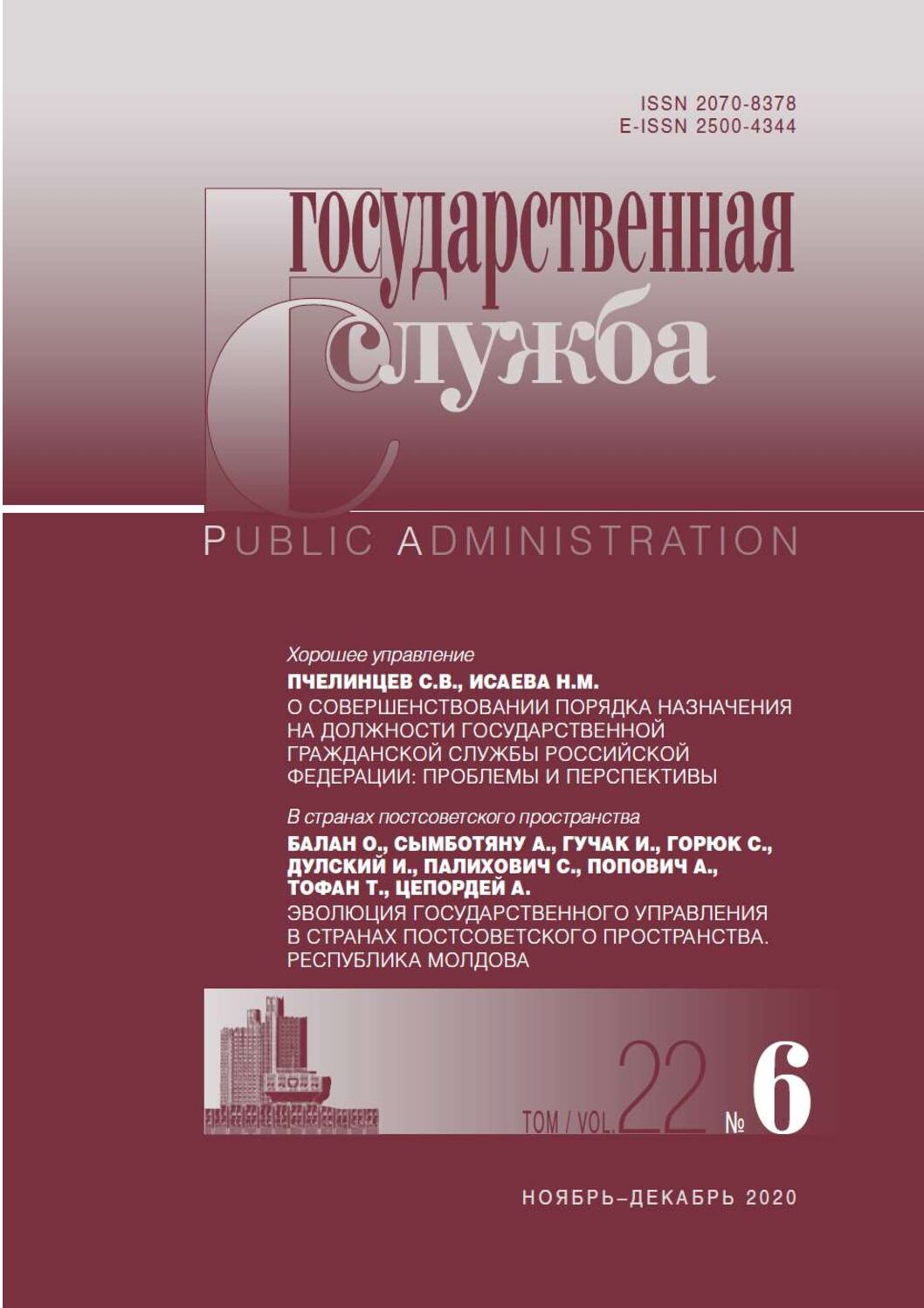Recommended link to article:
DMITRY VASILYEVICH TYUTINа
аKaluga Branch of the Russian Presidential Academy of National Economy and Public Administration
DOI: 10.22394/2070-8378-2020-22-6-37-45
Abstract:
The article is devoted to assessing the impact of the demographic structure of municipalities’ population on labor productivity in the economic sphere of the Kaluga region. The concentration of population and economic activity in some municipalities of the region causes an imbalance in development across the region. In this context, the assessment of the impact of demographic structure and employment on the level of labor productivity in municipal economies becomes relevant. The assessment of these conditions makes it possible to substantiate the priorities of the region spatial development policy, which ensures a balance of equalization and stimulation. This study aims to analyze the influence of the structure of demography and employment on labor productivity. The methodological basis of the research was formed by the methods of a cluster and structural (“shift – share”) analysis. The analysis made it possible to identify groups of municipalities in the region with different demographic indicators and to provide an assessment of the impact of the structure of demography and employment on labor productivity within these groups. We can see that the growth of labor productivity in these groups of municipalities is specific. It can be assumed that the “central-peripheral” model of the region’s development has both definite advantages and disadvantages. Peripheral territories are experiencing a deficit of human resources, and this requires finding a balance between stimulating and equalizing policies of the regions’ development. This model can be improved through the specific policy of the region associated with increasing income for workers engaged in the public sector and diversifying the economy.
Keywords:
demographic structure, structural changes, labor productivity, central-peripheral model, Kaluga region
Received:
April 20, 2020
References:
Akindinova N.V., Yasin E.G., Avdeeva D.A., Denisenko M.B., Kondrashov N.V., Chekina K.S., Yarkin A.M. Scenarios for the growth of the Russian economy, taking into account the contribution of human capital: report for XX April international scientific conference on the problems of economic and social development, Moscow, April 9–12, 2019. Moscow: Izdatel’skiy dom NIU VShE. 2019. In Russian
Baburin V.L., Badina S.V. Assessment of the socio-economic potential of a territory prone to adverse and dangerous natural phenomena. Vestnik Moskovskogo Universiteta. Seriya 5. Geografiya. 2015. No. 5. P. 9–16. In Russian
Balatsky E.V., Ekimova N.A. Internal sources of labor productivity growth in Russia. Mir novoy ekonomiki. 2019. No 13. P. 90–102. DOI: 10.26794 / 2220-6469-2019-13-4-90-102.
Didyk V.V. The condition of human resources as a factor of social labor productivity formation in the region. Ekonomicheskiye i sotsial’nyye peremeny: fakty, tendentsii, prognoz. 2008. No 4. P. 62–70. In Russian
Zolotov A. The social productivity of labor. Ekonomist. 2002. No. 6. P. 92–96. In Russian
Kolechkov D. V., Gadzhiev Yu. A., Timashev S. A., Makarova M.N. Gross municipal product: methods for calculation and application. Ekonomika regiona. 2012. No. 4. P. 49–59. In Russian
Masych M.A., Panichkina M.V. Trends and patterns of socio-economic development of Russia and foreign countries from the standpoint of labor productivity. Nauchno-tekhnicheskiye vedomosti SPbGPU. Ekonomicheskiye nauki. 2017.Vol. 10, No. 6. P. 50–63. DOI: 10.18721 / JE.10605. In Russian
Mirkin B.G. Cluster analysis methods for supporting decisions: overview. Preprint. Moscow: Izdatel’skiy dom NIU VShE. 2011. P. 88. In Russian
Mironov V.V., Konovalova L.D. On the relationship of structural changes and economic growth in the world economy and Russia. Voprosy ekonomiki. 2019. No 1. Р. 54–78.. DOI: 10/32609 / 0042- 8736-2019-1-54-78. In Russian
Mikheeva N.N. Comparative analysis of labor productivity in Russian regions. Region: ekonomika i sotsiologiya. 2015. No 2. P. 86–112.. DOI: 10/15372 / REG20150605. In Russian
Mikheeva N.N. Structural factors of regional dynamics: measurement and assessment. Prostranstvennaya ekonomika. 2013. No. 1. P. 11–32. In Russian
The Russian economy in 2018. Trends and prospects. (Issue 40) [V. Mau et al.; under the scientific ed. by Dr. Econ. Sciences Kudrin A. L. & Dr. Econ. Sciences Sinelnikov-Murylev S. G.]. The Ye.T. Gaidar Institute for Economic Policy. Moscow: Izdatel’stvo Instituta Gaydara. 2019. P. 656. In Russian
Friedmann J. Regional development policy. Boston: Massachusetts Institute of Technology. 1966. In English
Krugman P. R. Geography and Trade. Cambridge: MIT Press. 1991. In English
Solow R.M. Technical Change and the Aggregate Production Function. The Review of Economics and Statistics. August 1957. Vol. 39. No. 3. P. 312–320. In English
Solow R.M. We’d better watch out. New York Times Book Review, 12.07.1987. URL: http://standupeconomist.com/pdf/misc/ solow-computer-productivity.pdf In English
Articles in Open Access mode are published under the Creative Commons Attribution 4.0 International (CC BY) license.

